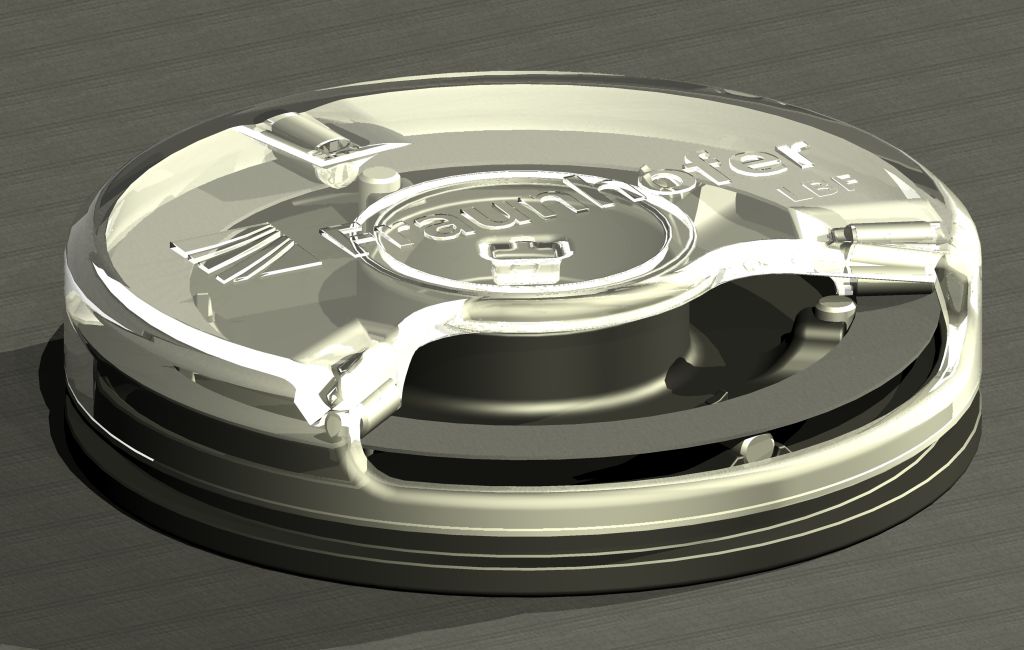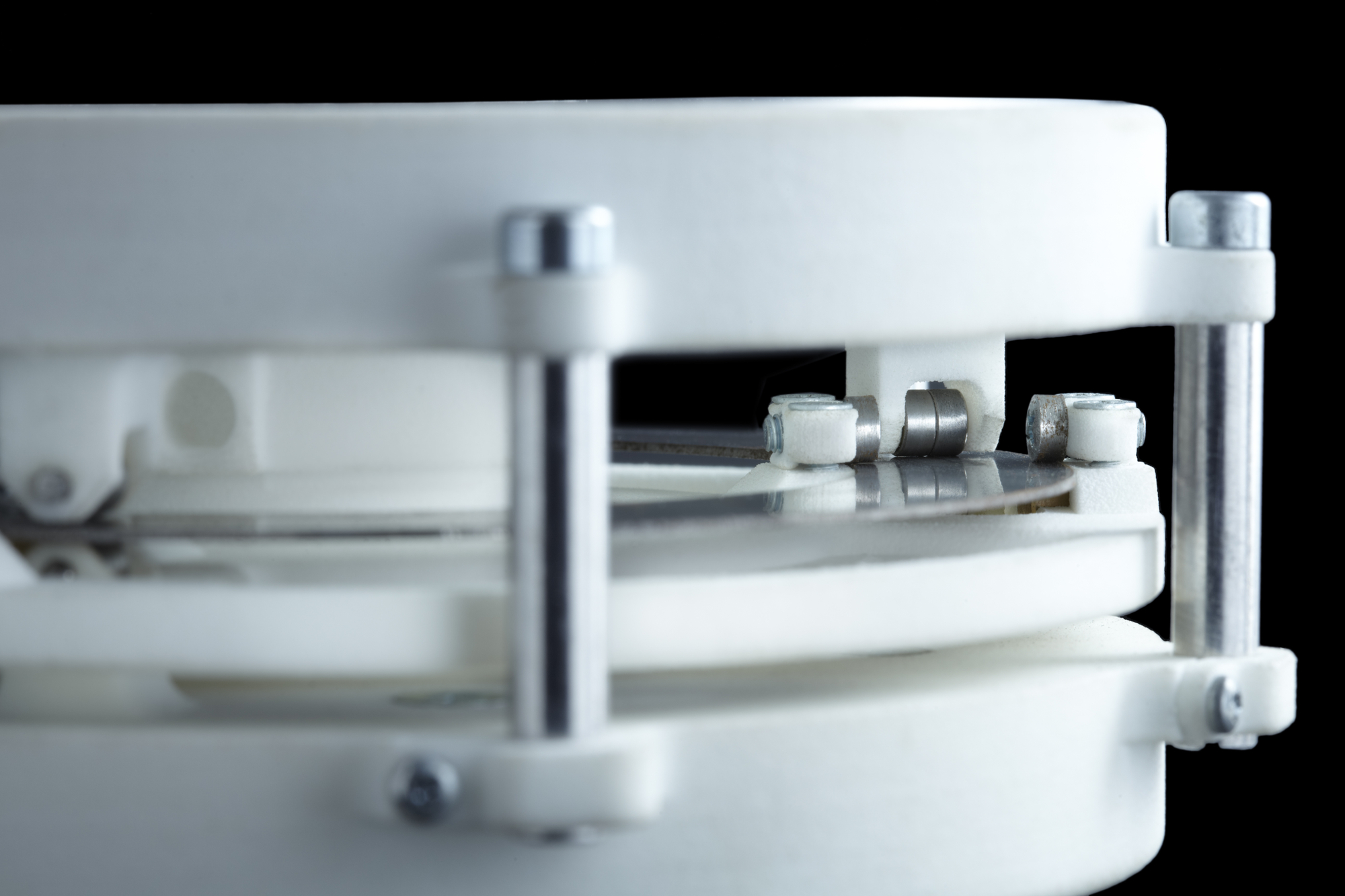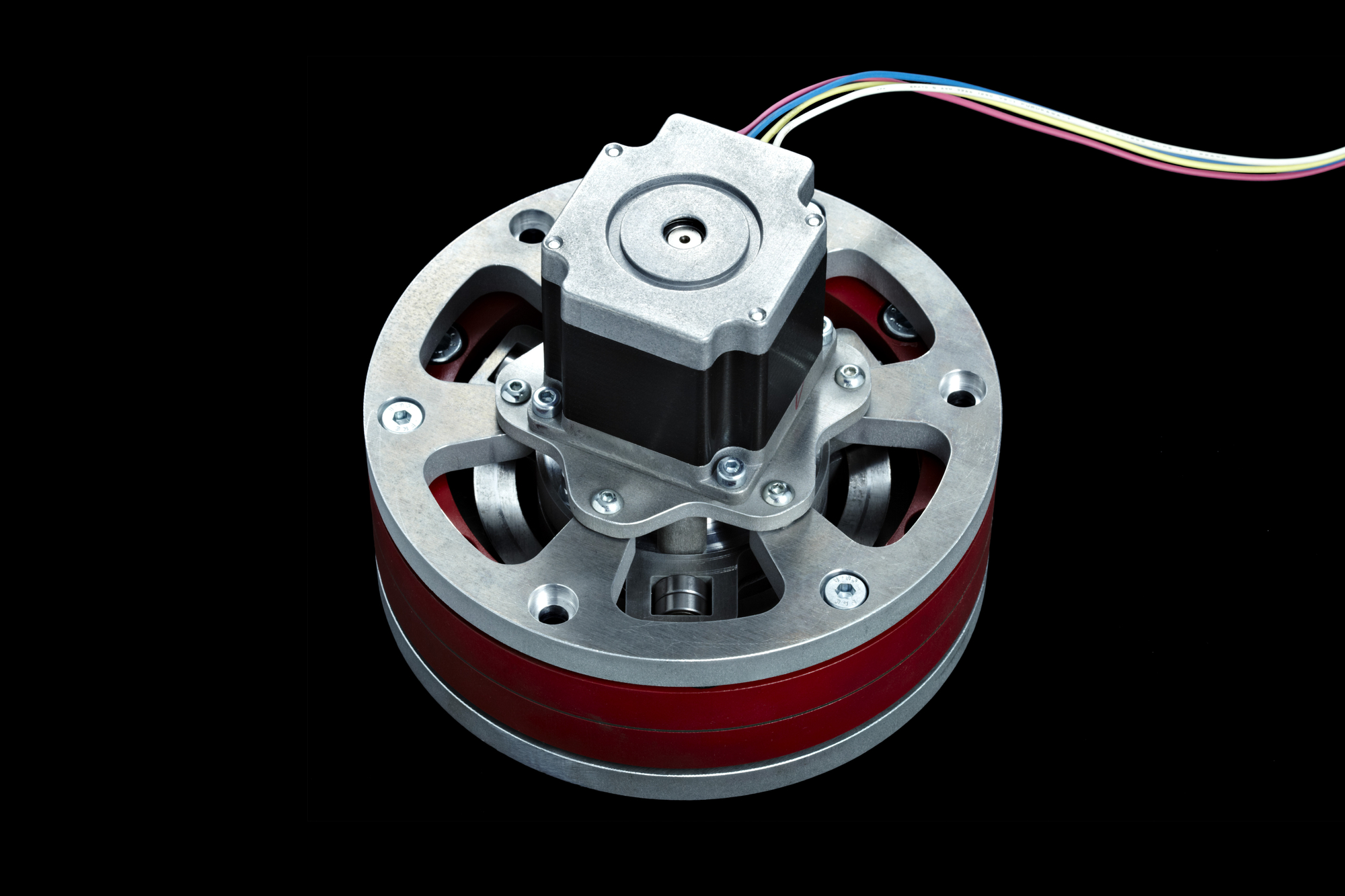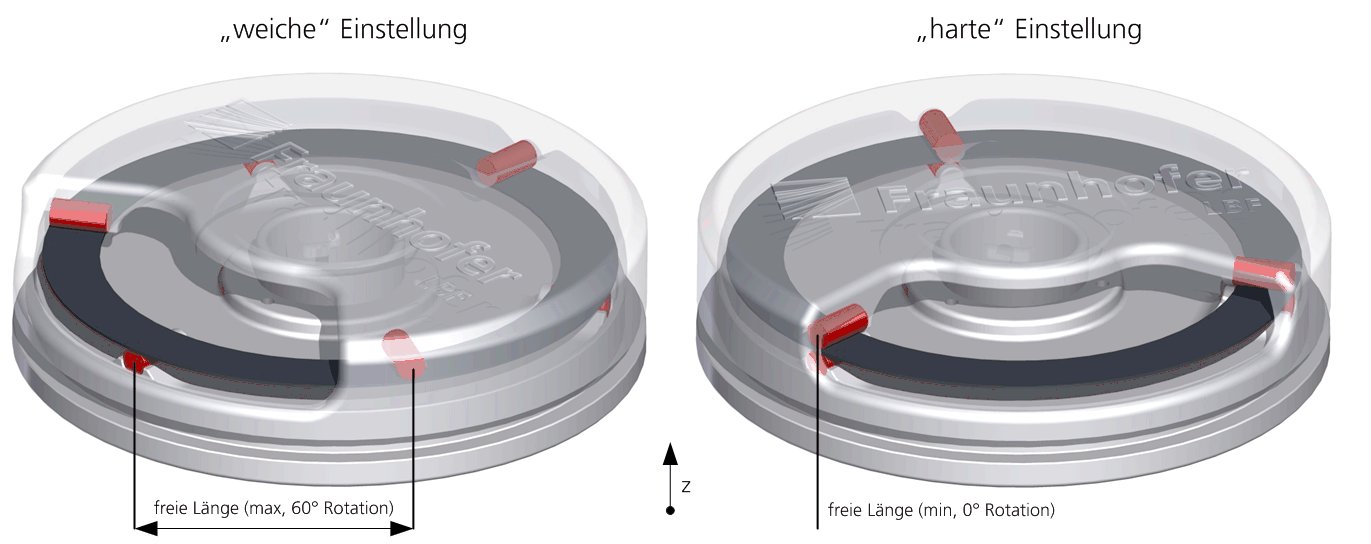Fraunhofer LBF has developed an adjustable stiffness element, which is based on a very simple design and permits a wide range of adjustment.
A ring used as a spring
Adjustable stiffness element
Defined-stiffness elements or spring elements are used in numerous engineering applications, for example on the chassis of a vehicle , in bearings or vibration absorbers. Many of these applications would benefit from the capability to adapt the stiffness of these elements to changing ambient or operating conditions. Research scientists at Fraunhofer LBF have come up with a design in which a circular ring disc serves as spring. The components to be connected are attached to the circular ring disc through three connections per side. The stiffness in the direction of the main axis varies as a function of the angular position of these connections relative to each other. This setup enables infinite adjustment of stiffness from "fully locked" (hard) to relatively soft.



Wide range of adjustment:
Unlike currently used alternative solutions – with the exception of adjustable air springs – this design principle enables infinite variation of axial stiffness over an extraordinarily wide range. This wide range of adjustment offers several advantages: A single configuration can be used for multiple applications simply by varying the angle of rotation. This means that fewer component variants are needed to cover a variety of applications. Design complexity is reduced compared to air springs, and adjustment is facilitated, as no pump or elaborate sealing arrangements are required.
In vibration absorber applications, the absorber system can be adapted to a wide spectrum of excitation frequencies. Design complexity and production-related cost of the solution are comparatively low. The fact that the adjustment movement is a rotation eliminates the need to use complicated actuator systems to achieve the adjustment.
The available design variants provide for a compact and mechanically protected integration of actuators and sensors, if used, within the system. A fully enclosed design is possible, whereby the absorber mass can serve as enclosure. As opposed to other approaches, where the variation of stiffness is achieved through the free length of a leaf spring, the adjustment does not negatively affect the necessary installation space in any way. Actuator components on the absorber mass are not required. This enables extremely low absorber masses, which has a positive effect on the scalability of the solution.
Applications extending from cars to energy harvesting:
The new design can be applied wherever adjustable stiffness elements are required or advantageous, for example for absorbing vibrations in technical systems, particularly in automotive engineering, and in machinery or plant construction. Further applications are as active or passive mounts for machines, machine components or machine assemblies, e.g. for machine mounting. In these applications, the resonance frequency will be above the machine's operating point when a hard setting is chosen, and below the machine's operating point when a soft setting is used. This means that the machine can be run up with the "hard" setting, and then changed to the "soft" setting, so that operation above the resonance frequency can be achieved practically without passing through a resonance.
 Fraunhofer Institute for Structural Durability and System Reliability LBF
Fraunhofer Institute for Structural Durability and System Reliability LBF